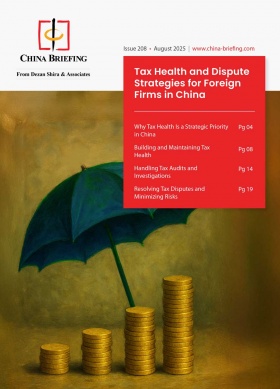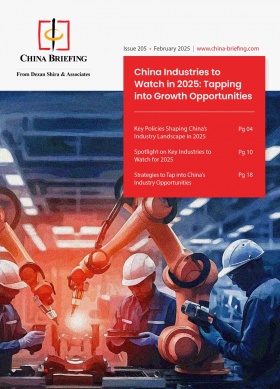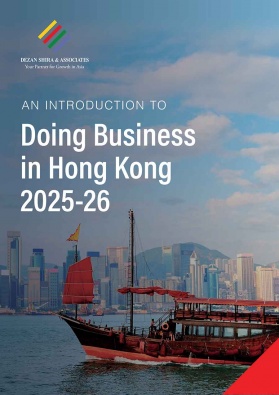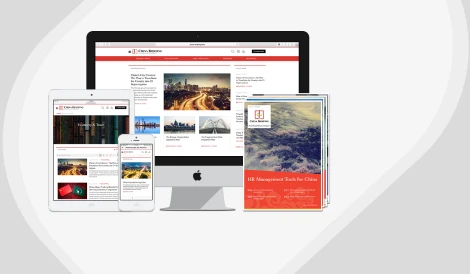How to Smoothly Transition to eMPF: A Checklist for Employers
eMPF transition for employers is now underway as Hong Kong modernizes its MPF system. This guide helps employers prepare, onboard, and stay compliant.
On June 26, 2024, the Hong Kong Government officially launched the Electronic Mandatory Provident Fund (eMPF) platform — a centralized, one-stop digital online hub designed to simplify and modernize MPF management. The goal is simple: make MPF administration faster, more efficient, and user-friendly for both employers and scheme members.
Since its inception in 2000, the MPF system required employers to interact separately with individual trustees. To address inefficiencies and improve consistency, the government and the Mandatory Provident Fund Authority (MPFA) developed the eMPF platform — accessible via both website and mobile app, and operated by a designated MPFA entity. Employers, scheme members, and self-employed people can now view and manage all MPF accounts in one place, anytime.
This article explains what the eMPF transition means for payroll and HR teams, provides a step-by-step migration checklist, and highlights key compliance actions to ensure a smooth onboarding from day one.
Why transition to the eMPF platform
The eMPF platform centralizes Hong Kong’s MPF administration into a unified, fully digital system. It offers employers, scheme members, and self-employed individuals a single point of access to all MPF trustee accounts, enabling real-time tracking of contributions, compliance status, and account activity — all while eliminating manual, paper-based processes.
By providing full transparency into fund allocations and leveraging shared infrastructure, the platform significantly reduces administrative costs. It also features automated updates to reflect regulatory changes, such as the abolition of the MPF offsetting mechanism in 2025, ensuring accurate liability calculations and retirement planning.
Through streamlined operations and enhanced visibility, eMPF improves efficiency for businesses and individuals alike, while reinforcing the integrity and sustainability of Hong Kong’s pension system.
Key features of the eMPF platform
|
Key Differences between the Traditional MPF System and the New eMPF Platform: |
||
| Feature | Traditional MPF system | New eMPF platform |
| Access | Separate logins required for each trustee; some trustees offer a limited or no online system access | Single login to access all trustees’ accounts via a centralized digital system |
| Flexibility | Only one administrator level; limited user role customization | Multiple user roles with customizable access rights across different payroll groups |
| Paper-free | Heavy reliance on physical paperwork for MPF tasks | Nearly all MPF-related processes are digitized and handled through the eMPF portal |
Unified account management
Employers participating in multiple MPF schemes or using different trustees can now log in to a single eMPF account to view all their schemes in one place and monitor accrued benefits across the board.
More choices for MPF contribution
Submission channels
The eMPF supports multiple channels for employers to submit MPF contributions remittance statements, such as by post, drop-in box, email, and fax. Each submission channel is monitored daily and time-stamped upon receipt to ensure timely processing.
Important note: Please do NOT submit the same remittance statement through multiple channels, as this may lead to duplication and processing delays.
Payment methods
As an employer, timely and accurate remittance of MPF contributions is a statutory obligation under Hong Kong Law.
To support this, the eMPF platform offers multiple payment methods, both online and offline, for flexible and convenient arrangements. Below are the seven commonly used payment methods for MPF contributions.
| 7 Commonly Used Payment Methods for MPF Contributions | |||
| Method | Key features | Process description | Submission date |
| Check | No internet required | Mail a physical check | The date the check is received by post or submitted via the drop-in box |
| E-check | Electronic version of the check | Submit via online banking | The date the designated MPF scheme bank account is credited |
| Direct debit | Scheduled payments | Set up auto-pay with bank authorization | The date the designated MPF scheme bank account is debited |
| Direct credit | One-time transactions | Manually transfer funds to the designated account | The date the designated MPF scheme bank account is credited |
| FPS (Faster Payment System) | Instant transfers | Send payment via Hong Kong’s FPS network | The date the designated MPF scheme bank account is credited |
| PPS (Payment by phone service) | 24/7 payment availability | Pay via mobile app or phone | The date the designated MPF Scheme bank account is credited |
| Online bill payment | Uses existing online banking | Pay using bill code via online banking or ATM | The date the designated MPF Scheme bank account is credited |
* Important note: Not all trustees accept all the above payment methods, so you should check and confirm with your trustee.
Individualization setting
The eMPF platform provides employers with the flexibility to customize user access rights and payroll group settings based on their internal management arrangements.
User management
The eMPF platform assigns different permission levels to users based on their roles and responsibilities. These access controls help ensure secure and efficient MPF management while maintaining compliance.
| User Role | Access Rights & Responsibilities |
| Company Authorized Person |
|
| Scheme Authorized Person |
|
| Other Users |
|
Payroll group
A payroll group refers to a set of contribution settings (such as contribution period, default payment method, and so on) configured according to the employee list for easier management.
Employers can also set up internal approval workflows for submitting contribution data within each payroll group, allowing for better control and accountability.
What should I do to transition to eMPF?
Before the transition
Employers should first take note of the target or tentative transition date for their MPF schemes. The MPFA provides a timetable outlining when each trustee and their respective schemes will be onboarded to the eMPF platform. Staying informed of this schedule ensures that employers have sufficient time to prepare for the transition.
Next, it is important to appoint a Company Authorized Person. This individual will serve as the primary representative responsible for managing company-level functions within the eMPF platform. Their role includes enrolling in schemes, overseeing company accounts, and managing user access. Early appointments and preparation will help ensure a smooth registration process.
Before onboarding to eMPF, employers must also submit administrative instructions to their current trustees using the original communication channels (for example, email, fax, or post). These instructions may include updates to employee records, contribution details, or other scheme-related matters. Completing this step ahead of the transition helps avoid disruptions during the migration period.
After receiving the communication pack
Once employers receive the official communication pack from trustees, they should first confirm the actual transition date and review the transitional arrangement timeline. All MPF schemes are scheduled to be onboarded to the eMPF platform, after which all related administrative tasks will be managed exclusively through the new system.
Employers may then register on the eMPF platform starting from the date specified in the communication pack. This marks the beginning of the onboarding process for the MPF scheme in which the employer participates. However, it’s important to note that MPF account information will only become visible after the scheme has been fully transferred to eMPF.
The transitional operation for each scheme typically takes five to eight days to transfer to the eMPF, during which time the trustee will suspend the processing of administrative instructions for the affected MPF accounts. Employers should pay close attention to the trustees’ service cut-off date and the transitional arrangements to avoid submitting instructions that may not be processed correctly during this period.
After the transition
Once the MPF scheme has been successfully onboarded to the eMPF platform, employers should begin by reviewing and confirming the accuracy of all account information. Trustees will have transferred both employer and scheme member data to the platform, and it is essential to verify that all details have been correctly migrated.
Important note: Settings related to voluntary MPF contribution calculations will not be transferred to eMPF and must be reconfigured manually if needed.
Following onboarding, all MPF administrative instructions—whether previously submitted in paper form or online—must now be processed exclusively through the eMPF platform. This includes tasks such as updating employee records, handling scheme transfers, and managing contribution details.
Employers should also set up payroll groups and assign user access rights within the eMPF system. This allows for efficient management of contributions and operations by segmenting employees into relevant payroll groups and customizing access levels based on user roles.
Important note: The monthly MPF contribution deadline remains unchanged. Employers must continue to submit MPF contributions on time to remain compliant with statutory obligations.
| Transition to eMPF: Step-by-Step Overview | ||
| Phase | Action | Details |
| Before transition | Check target/tentative transition date | Refer to the latest timetable for trustee and scheme onboarding to allow sufficient preparation time. |
| Appoint Company Authorized Person | Assign a representative with full access to manage company-level functions and registration. | |
| Submit instructions to trustees | Provide administrative instructions to trustees using existing channels before onboarding. | |
| After receiving the communication pack | Confirm actual transition date and timeline | All MPF schemes will be managed via eMPF after onboarding; transitional arrangements will apply. |
| Register on eMPF | Employers can enroll from the date specified in the communication pack; account information appears after onboarding. | |
| Monitor transitional arrangements | Scheme transfer takes 5–8 days; trustees suspend admin processing during this period. | |
| After transition | Review and confirm account information | Verify the accuracy of migrated data; note that voluntary contribution settings are not transferred. |
| Submit all MPF instructions via eMPF | All administrative tasks must be submitted directly through the eMPF platform. | |
| Set up payroll groups and user access | Configure user roles and payroll groups for efficient management. | |
Frequently asked questions
For employers
Q1: Can I continue submitting instructions to my trustee after the scheme is onboarded to the eMPF platform?
A: No. Once your scheme is onboarded to the eMPF platform, all MPF administrative instructions must be submitted directly through the eMPF system. Trustees will no longer process instructions via traditional channels.
Q2: What is the role of trustees after the launch of the eMPF platform?
A: Trustees will continue to fulfill their fiduciary duties, including the duty of prudence, diversification, loyalty, and compliance. These responsibilities remain unchanged under the eMPF framework and are carried out in the best interest of scheme members.
Q3: As an employer, do I need to register for the eMPF platform as soon as possible?
A: Yes. If your company’s MPF scheme has already transitioned to the eMPF platform, we strongly recommend registering as early as possible. Early registration allows you to manage MPF matters more efficiently and ensures smoother contribution processing.
For employees:
Q4: Can an MPF intermediary or my family member assist me with MPF administration tasks?
A: Yes. You may ask an MPF intermediary or a representative (such as a family member) to help fill out the e-form online via the eMPF Assistant Portal. You will then be able to review and verify the e-form before submitting it through the eMPF Member Portal.
Q5: My company participates in two MPF schemes. After registering with the eMPF platform, will I see account information of both schemes?
A: MPF schemes are onboarded to the eMPF platform in phases. Once both schemes have transitioned, your account information for each will automatically appear on the eMPF platform. You can check the onboarding schedule at www.empf.org.hk.
Dezan Shira’s insights
The long-term benefits of the eMPF platform are evident: it reduces administrative costs, accelerates workflows, and provides greater transparency in retirement records for both employers and scheme members. To fully leverage these advantages, employers are strongly encouraged to register on the digital eMPF platform as early as possible.
Early adoption allows employers to test data uploads, train staff, and resolve any discrepancies before the final migration wave. Likewise, employees who activate their eMPF accounts ahead of time can explore fund options at their own pace, rather than under deadline pressure.
To prepare effectively, employers should consider the following:
- System integration readiness: The eMPF platform will centralize MPF contributions and data. Employers should assess whether their current payroll and HR systems are compatible with eMPF and plan for any necessary upgrades or integrations.
- Transition budgeting: All contributions, fund switches, and late payment fees will be processed through eMPF. Employers should factor these cash flow requirements into their upcoming fiscal budgets to avoid disruptions.
- Recordkeeping compliance: While eMPF provides a digital audit trail, employers must still retain original documents. It is recommended to keep wage slips for the past 12 months and for six months following an employee’s departure.
- Dedicated management structure: Assigning one eMPF specialist per payroll type (for example, monthly, weekly, daily, or project-based) ensures smooth data handling and reconciliation. These specialists should report to a central eMPF lead to maintain oversight and prevent delays.
- Professional consultation: As the eMPF platform rolls out in phases, seeking expert advice can help employers optimize their MPF processes and ensure full compliance with the new system requirements.
About Us
China Briefing is one of five regional Asia Briefing publications, supported by Dezan Shira & Associates. For a complimentary subscription to China Briefing’s content products, please click here.
Dezan Shira & Associates assists foreign investors into China and has done so since 1992 through offices in Beijing, Tianjin, Dalian, Qingdao, Shanghai, Hangzhou, Ningbo, Suzhou, Guangzhou, Haikou, Zhongshan, Shenzhen, and Hong Kong. We also have offices in Vietnam, Indonesia, Singapore, United States, Germany, Italy, India, and Dubai (UAE) and partner firms assisting foreign investors in The Philippines, Malaysia, Thailand, Bangladesh, and Australia. For assistance in China, please contact the firm at china@dezshira.com or visit our website at www.dezshira.com.
- Previous Article New Guidelines on Handling Sensitive Personal Data in China in Effect November 1
- Next Article






